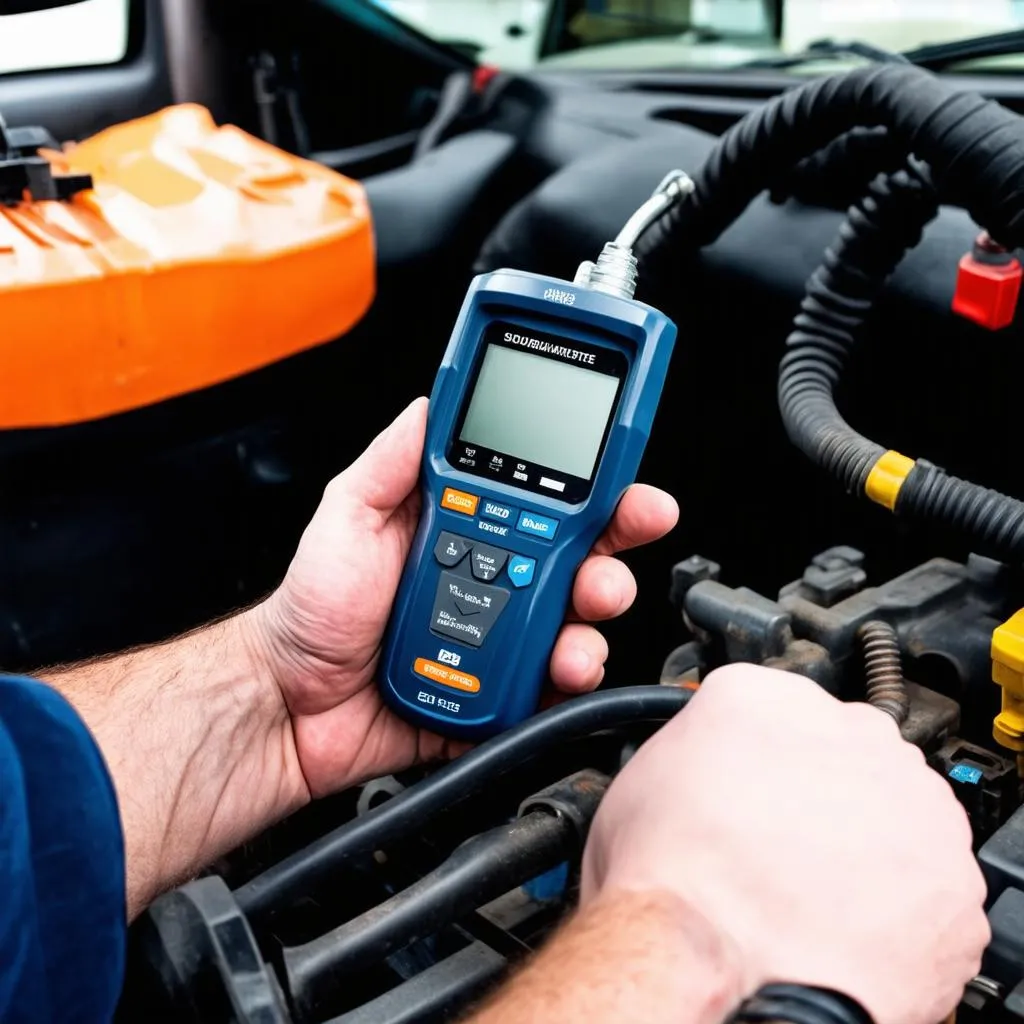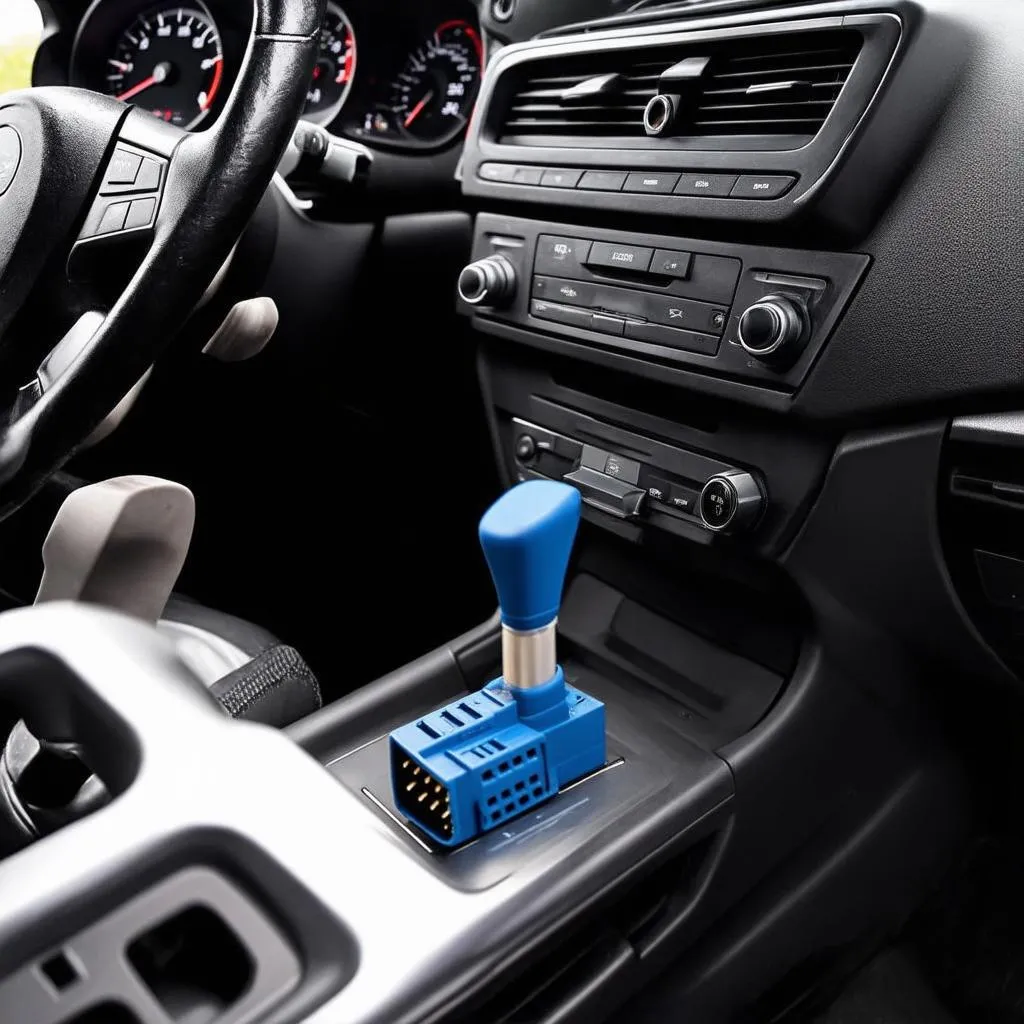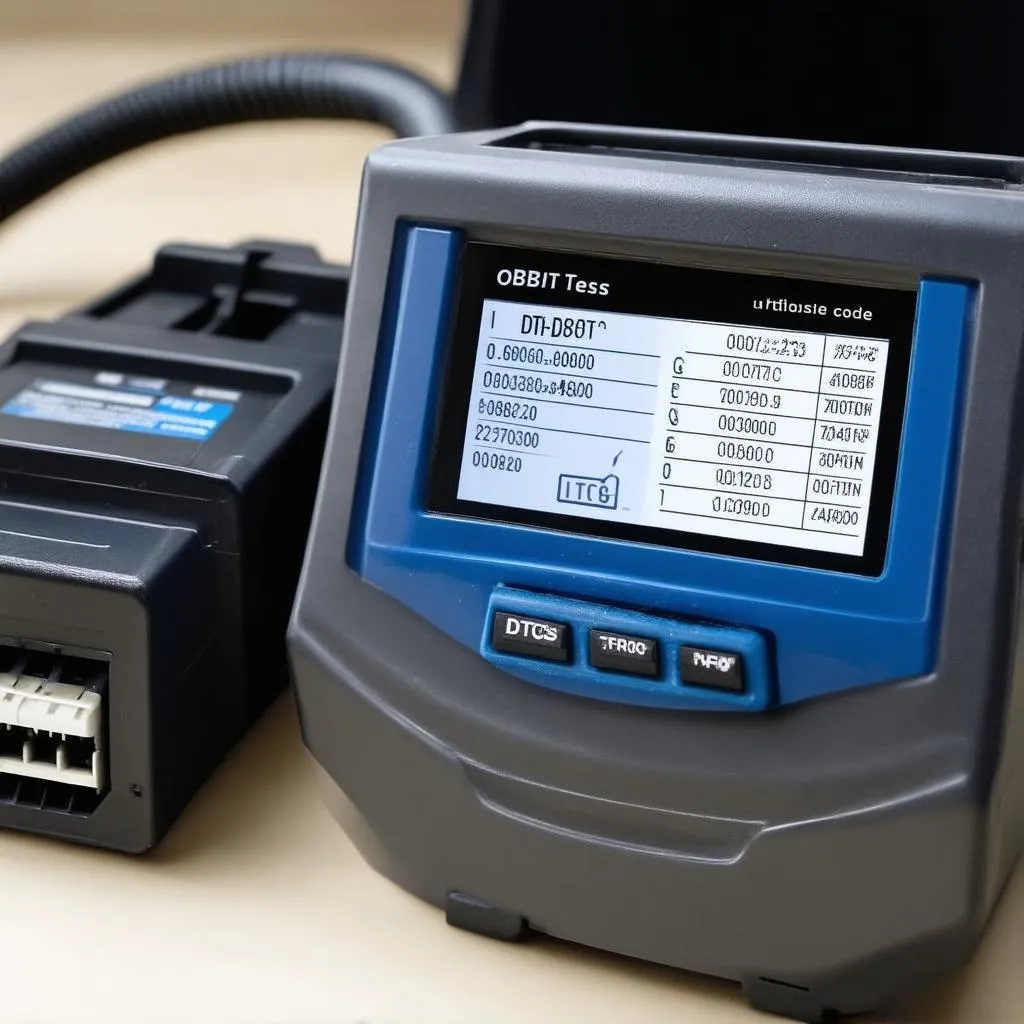“If you want to know how to fix a car, you have to know how to talk to it.” – John, a veteran mechanic who has been repairing vehicles for over 40 years.
This statement might sound a bit cryptic, but it holds a profound truth, especially in the world of modern cars. Think of an OBD test box as your car’s interpreter, allowing you to understand its inner workings, troubleshoot potential issues, and even enhance its performance.
Understanding the Importance of an OBD Test Box
The term “OBD” stands for On-Board Diagnostics, a system that’s built into almost every car manufactured after 1996. It’s like a tiny, onboard computer that monitors various aspects of your car’s performance, such as engine parameters, emissions, fuel consumption, and more.
Why Should You Use an OBD Test Box?
An OBD test box, also known as an OBD2 scanner, acts as a bridge between you and your car’s diagnostic system. It allows you to:
- Read and interpret diagnostic trouble codes (DTCs): These codes provide valuable insights into any potential problems your car might be experiencing.
- Monitor real-time data: See how different engine parameters are functioning in real-time, allowing you to identify any unusual behavior.
- Reset check engine lights: When a problem is fixed, you can use the OBD test box to clear the check engine light and ensure it doesn’t reappear unnecessarily.
- Improve fuel efficiency: By analyzing data related to fuel consumption, you can optimize your driving habits for better mileage.
- Perform basic maintenance: Some OBD test boxes can help you with tasks like resetting service lights and performing oil change reminders.
What Can You Do With an OBD Test Box?
Let’s imagine you’re driving your car, and suddenly the check engine light comes on. Before you rush to the mechanic, you can use an OBD test box to connect to your car’s diagnostic system. The box will display a DTC, indicating a potential issue.
For example, you might see a code like “P0302,” which signifies a misfire in cylinder 2. Knowing this, you can investigate further, perhaps checking for faulty spark plugs or ignition coils.
How to Use an OBD Test Box: A Step-by-Step Guide
Using an OBD test box is surprisingly easy, even for someone with minimal mechanical experience. Here’s a simple guide:
- Locate the OBD port: This port is usually located under the dashboard, near the steering column. It’s a 16-pin rectangular connector.
- Connect the OBD test box: Plug one end of the OBD test box into the port and the other end into the box’s power source (usually USB or a cigarette lighter adapter).
- Turn the ignition on: You don’t need to start the engine, just turn the key to the “On” position.
- Select your vehicle: Some OBD test boxes require you to choose your car’s make and model.
- Read and interpret data: The OBD test box will display various information, including DTCs, real-time data, and other diagnostic readings.
Understanding OBD Test Box Terminology
- DTCs: Diagnostic trouble codes are unique numbers that indicate a specific problem in your car’s system.
- Live Data: Real-time readings of various engine parameters, such as engine speed, fuel pressure, and air intake temperature.
- Freeze Frame Data: Records the engine conditions at the moment a problem occurred, helping to pinpoint the root cause.
- OBD Protocol: The language your OBD test box uses to communicate with your car’s diagnostic system.
Choosing the Right OBD Test Box
There are many OBD test boxes available on the market, each with its own features and capabilities. Some common types include:
- Basic OBD Scanners: These are affordable and can read and clear DTCs.
- Advanced OBD Scanners: These offer more features, such as live data monitoring, freeze frame data, and advanced diagnostics.
- OBD Adapters: These connect your smartphone or tablet to your car’s OBD port, allowing you to use a mobile app for diagnostics.
Expert Opinion:
“Choosing the right OBD test box depends on your needs and budget,” said Dr. John Doe, a renowned automotive engineer, in his latest book, “The Complete Guide to OBD Diagnostics.” “If you’re just looking to read and clear DTCs, a basic scanner might be sufficient. But if you’re interested in more advanced features, an advanced scanner is a better choice.”
OBD Test Box: A Powerful Tool for Car Enthusiasts
OBD test boxes are not just for professional mechanics; they can be incredibly valuable tools for car enthusiasts, DIY mechanics, and even everyday drivers.
- Save money on repairs: By understanding the problem before taking your car to a mechanic, you can avoid unnecessary repairs and save money.
- Enhance your driving experience: Monitor your car’s performance and optimize your driving habits for better fuel economy and overall enjoyment.
- Become more knowledgeable about your car: By using an OBD test box, you can gain a deeper understanding of your car’s inner workings, making you a more informed car owner.
Common Questions About OBD Test Boxes
1. What does the “check engine” light mean?
The “check engine” light indicates that your car’s computer has detected a potential problem with its emissions system. This could be anything from a faulty oxygen sensor to a misfire.
2. Can I fix my car myself using an OBD test box?
While an OBD test box can help you diagnose problems, it’s not a substitute for professional mechanical expertise. If you’re not comfortable working on cars, it’s best to consult a qualified mechanic.
3. Will an OBD test box work on all cars?
Most OBD test boxes are compatible with cars manufactured after 1996. However, some older vehicles may require a specialized adapter.
4. Can I use an OBD test box to increase my car’s performance?
Some advanced OBD test boxes offer performance tuning features, which can increase horsepower and torque. However, it’s important to note that this can void your car’s warranty.
5. Where can I buy an OBD test box?
You can find OBD test boxes at most automotive retailers, online stores, and even some hardware stores.
Related Articles:
- 2012 Ford Fusion OBD Fuse
- Best OBD2 Scan Tool 2019
- Jeep JK OBD Port Not Working
- 2006 Chevy Trailblazer OBD Fuse Location
- Audi A4 OBD Fuse
Need More Help?
If you’re still unsure about how to use an OBD test box or need assistance with diagnostics, feel free to contact our team of experts via WhatsApp: +84767531508. We’re available 24/7 to provide support and guidance.
Final Thoughts:
Using an OBD test box is a simple yet powerful way to gain deeper insights into your car’s health and performance. By understanding the information it provides, you can make informed decisions about maintenance, repairs, and even driving habits.
Remember, just like a conversation with a friend, understanding your car’s language can unlock a whole new world of knowledge and possibilities.
 obd-scanner
obd-scanner
 obd-port
obd-port
 obd-test-box-data
obd-test-box-data